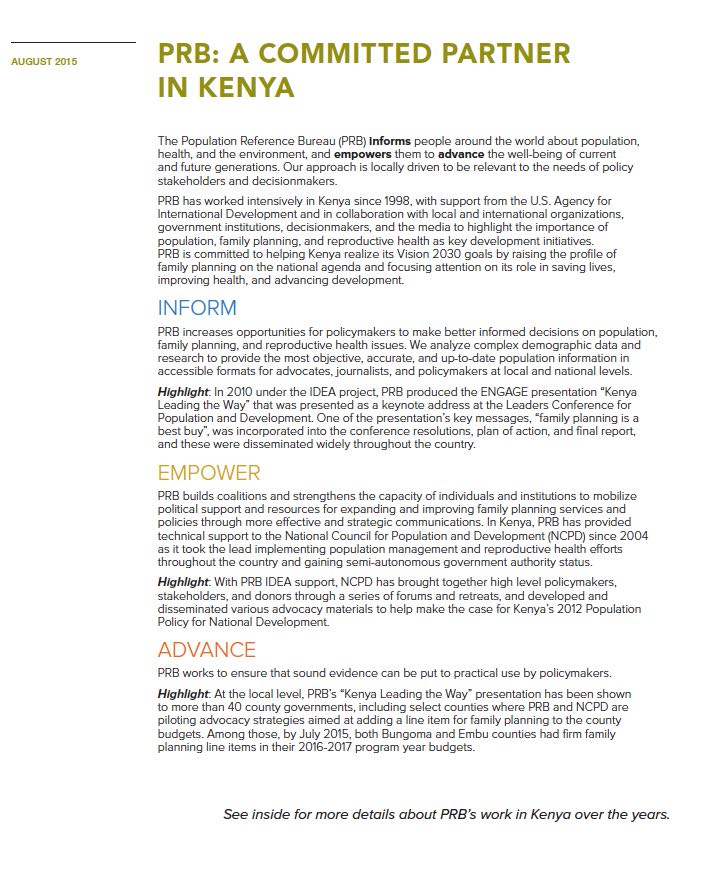Project: Supporting Population Evidence and Champions in Africa (SPEC)
400 Search Results Found For : "%E5%B9%BF%E5%B7%9E%E5%BC%80%E5%88%A9%E7%A9%BA%E8%B0%83%E5%92%8C%E7%89%B9%E7%81%B5%E7%A9%BA%E8%B0%83%E5%BE%AE%E4%BF%A1%E5%8F%B7%EF%BC%9AGU-2015"

Project: Supporting Population Evidence and Champions in Africa (SPEC)
Harnessing the Demographic Dividend in Ethiopia
Ethiopia, with a current population of about 100 million, has achieved gains in several major health indicators.

Project: PACE: Policy, Advocacy, and Communication Enhanced for Population and Reproductive Health
Population Growth Concentrated Among the Poorest Communities
As sub-Saharan African countries strive to grow their economies, it is critical that they consider their age structures—or more particularly, the age structures of their richest and poorest populations, which are determined largely by fertility rates.
Well-Being of U.S. Latino Youth Differs by Ethnic Background
(2017) Latino children have made progress over the past 10 to 15 years in several key areas of well-being according to a report co-authored by PRB and UnidosUS, but there are pronounced differences in the well-being of Latino children with different ethnic or national origins.
Nutrition of Women and Adolescent Girls: Why It Matters
Malnutrition, defined as ill health caused by deficiencies of calories, protein, vitamins, and minerals interacting with infections and other poor health and social conditions, saps the strength and well-being of millions of women and adolescent girls around the world.

Today, Young Women in the United States Are More Likely to Die Than at Any Point Since the 1960s. Why?
The first in a series of three blogs on our new "Losing More Ground" report, published November 30.

Project: IDEA: Informing Decisionmakers to Act
PRB: A Committed Partner in Kenya
(2015) PRB has worked intensively in Kenya since 1998, with support from the U.S. Agency for International Development and in collaboration with local and international organizations, government institutions, decision makers, and the media to highlight the importance of population, family planning, and reproductive health as key development initiatives.
Addressing Limited Contraceptive Options and Inconsistent Use in Zimbabwe
(2015) Summary: Although the reported use of modern contraceptives has remained stable in Zimbabwe, fertility increased from an average of 3.8 to 4.1 children per woman between 2006 and 2011.



